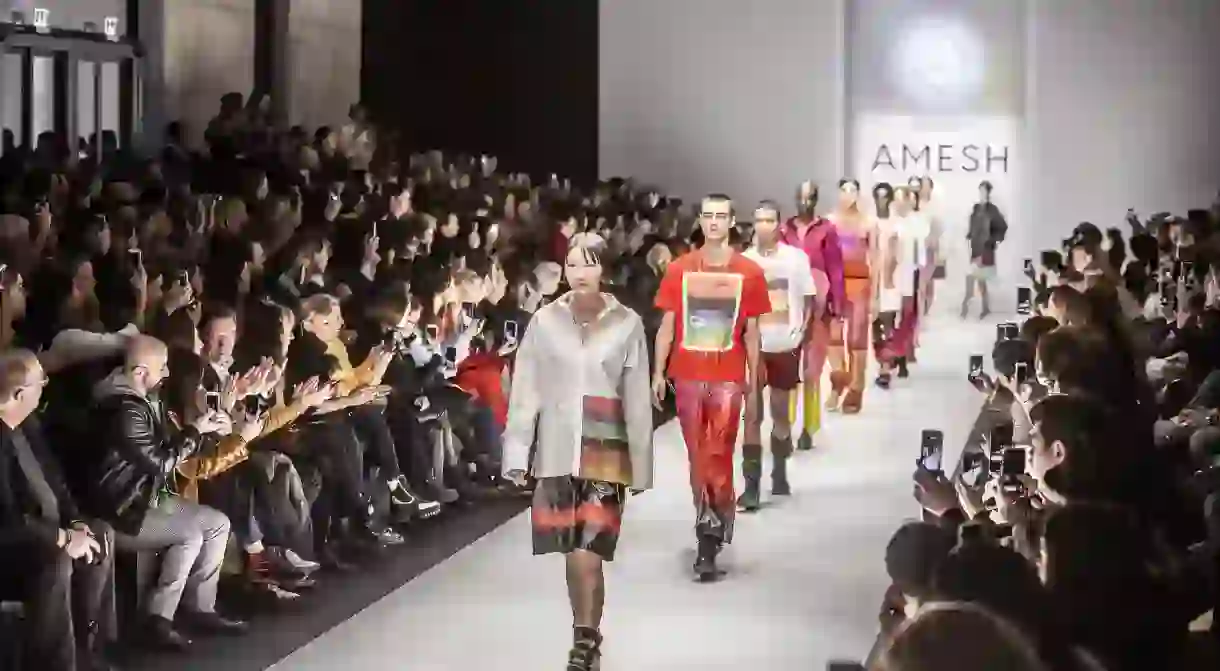This Is How Fashion Week in Berlin Champions New Design Talent

Over the past decade, Berlin Fashion Week has provided an alternative to its better-known New York, Paris and London counterparts. The event, which takes place in January and July, has built a reputation for championing unheralded local and international designers who embody the German capital’s forward-thinking approach to design.
Recent years have seen a surge of interest in cities outside the traditional fashion powerhouses of New York, London, Milan and Paris. Berlin makes a strong case in point. It’s the home of 10 different fashion schools, an array of influential trade shows and a diverse crowd. But the city is at its most stylish during January and July when it welcomes editors, buyers and influencers from around the world to Mercedes-Benz Fashion Week (MBFW) in Berlin.

Hamburg, Munich and Düsseldorf were all considered Germany’s style capital at various points in time – until 2007 when fashion week settled in Berlin. It’s a fitting location. Berlin takes a forward-thinking approach to design, embodied by concept stores like Darklands, Voo and SOTO, and its nightlife is among the most liberal in Europe. “I couldn’t pinpoint a single look that sums up German fashion design,” says Christiane Arp, Vogue Germany’s editor-in-chief. “But that’s what makes it so exciting.”
Some of the world’s best-known labels, including Jil Sander, Hugo Boss and Adidas, originated in Germany, but the focus of its fashion week has shifted from household names to emerging local and international talent. The approach is led by Mercedes-Benz, which scours the globe for exciting new designers to showcase each season through its International Designer Exchange Program. In 2019, on the programme’s 10th anniversary, the company changed the scheme’s name to Mercedes-Benz Fashion Talents (MBFT).

Its alumni are impressive – past designers include Mary Katrantzou, loved for her eclectic prints and confident use of colour, and Australia-born Dion Lee, whose sleek silhouettes lend themselves as well to New York and London as Sydney and Melbourne.
In January 2019, designers Julia Seemann (Switzerland), Wataru Tominaga (Japan), Steven Tai (China) and MBFT newcomer Amesh Wijesekera (Sri Lanka) presented at the main MBFW in Berlin location. Along with eight other designers, they will take part in a celebratory event during London Fashion Week in February 2019.
“They [the designers] get the opportunity to present their collections to an international audience outside of their home markets,” says Bettina Haussmann, head of branded entertainment at Mercedes-Benz. “Some of the designers showing at MBFW in Berlin today were initially featured three or four years ago. Support continues long after the initial exchange.”

Tominaga has benefitted from the relationship since he joined the programme in 2017. “They [MBFW] continue to invite me to join various projects across the world, which is great. Paris is the ultimate goal because everyone attends fashion week there. I want to host a showroom there next and see what the reaction is.”
Arp shares a similar vision. Her project Vogue Salon, which launched in 2011, celebrates local designers, many of whom are new to the scene. “It’s about providing a platform for young creatives,” she says. “When fashion week first launched in Berlin, people had a lot of opinions. They said there was no new talent here. I wanted to prove them wrong. I thought, ‘I’m a curator; I can do this.’”
The event, which is hosted in a gallery-style space each season, has become one of the most hotly anticipated on the fashion week schedule. Among the January 2019 collections on show was a university project by Regina Weber. “She works in the design team at Paco Rabanne now, but her final-year work was too good not to showcase,” says Arp.
Aesthetically, it’s hard to pinpoint MBFW in Berlin’s signature style, and with the influx of newness, the aesthetic is becoming even more varied. “That’s what I love the most about German design,” says Arp. “Look at London, where you have everyone from Erdem to JW Anderson. It’s the same in Germany. Fashion is about what you do with it. It’s good to mix things up, and I think that’s what these curations present.”













